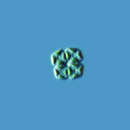en
names in breadcrumbs


Lemmermannia /ˌlɛməɹˈmæniə/ is a genus of fresh water trebouxiophyceans. as of March 2022, the genus contains five described species.[1] They form coenobia of 4 to 16 cells.[2] Its type species is L. tetrapedia (Kirchner) Lemmermann, originally described in 1880 but put into the genus Lemmermannia in 1904.[2][3][4]
The genus is named in honor of German botanist Ernst Johann Lemmermann.[5]
In 1880, Kirchner described Staurogenia tetrapedia.[3]
In 1897, Schröder described Tetrapedia emarginata[6]
In 1898, Kuntze moved Staurogenia tetrapedia to the genus Crucigenia, in the name Crucigenia tetrapedia.[7]
In 1900, Chodat described the genus Lemmermannia and used T. emarginata (now L. emarginata) as the type of the new genus.[5]
In 1904, Lemmermann moved Crucigenia tetrapedia into Lemmermannia as Lemmermannia tetrapedia, which was not widely recognized; the old name Crucigenia tetrapedia was kept in use.[2][4] The genus Lemmermannia had been ignored for many years until 2013.[2]
In 2013, Bock et al. found a new clade of algae including Crucigenia tetrapedia and three others using molecular methods.[2] Bock et al. (2013) decided that Crucigenia tetrapedia and Lemmermannia emarginata are the same organism.[2] Since C. tetrapedia was described first (in 1880) and has priority, it is the species name that should be used.[2][3] The type of Lemmermannia thus changed its name, from L. emarginata to L. tetrapedia (Kirchner) Lemmermann 1904.[2] Three other species formerly in the genus Tetrastrum were added to Lemmermannia.[2]
Lemmermannia includes triangular or oval green, planktonic algae that mostly form tightly joined square coenobia of 4 cells, with or without small rectangular opening in the centre.[2] L. komarekii make coenobia of up to 16 cells in the form of near-square synceonobia, where 4 tetrads join together.[2] The cells have a single plastid, with or without a small pyrenoid.[2] All species lack spines, and mostly have smooth cell walls, with or without convexity.[2] A minority of L. punctata individuals, as well as old empty cells of the species, have granules on the outer cell walls.[2]
Lemmermannia tetrapedia can use hypoxanthine and allantoin as the only nitrogen source for photosynthesis, which indicates that eukaryotic algae share similar purine degradation pathway to higher plants, animals, and fungi.[8]
Lemmermannia perform asexual reproduction (autosporation by sporangium); sexual reproduction has not been observed.[2]
Lemmermannia species perform two types of reproduction: L. tetrapedia exhibits Crucigenia-type of autosporation where the daughter coenobium rotates 45˚ relative to the cell wall of the mother coenobium; the other four species produce daughter coenobia in the same orientation as the mother coenobia.[2] This demonstrates that in this taxon a Crucigenia-type of autosporation should not be used as a generic character.
Molecular phylogenies based on the SSU rDNA and ITS rRNA genes show Lemmermannia to be a sister clade to Botryococcus in Trebouxiophyceae.[2]
As of March 2022, AlgaeBase accepted five species:[1]
All species inhabit freshwater around the globe.[2]
L. tetrapedia has been reported highly susceptible to heavy metals in water.[9]
Lemmermannia /ˌlɛməɹˈmæniə/ is a genus of fresh water trebouxiophyceans. as of March 2022, the genus contains five described species. They form coenobia of 4 to 16 cells. Its type species is L. tetrapedia (Kirchner) Lemmermann, originally described in 1880 but put into the genus Lemmermannia in 1904.